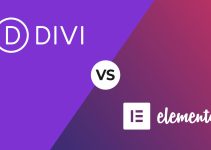In today’s digital age, having an online presence is crucial for any business. However, just having a website is not enough. It’s essential to optimize your website to rank higher in search engine results pages (SERPs). This process is known as search engine optimization (SEO). But what do you need to balance when doing SEO? In this article, we’ll explore the key elements involved in SEO and how to balance them for optimal results.
SEO involves several factors, including content, keywords, backlinks, and user experience. Balancing these elements is crucial to rank higher in SERPs and drive organic traffic to your website. However, it’s not always easy to strike the right balance. Each element requires careful attention and optimization to ensure that they work together effectively. In the following paragraphs, we’ll dive deeper into each of these elements to help you understand what you need to balance when doing SEO.
To achieve successful SEO results, you need to balance several factors, such as keyword research, quality content, on-page optimization, technical SEO, and backlinking. Keyword research helps you identify the right keywords to target, while quality content ensures your website provides value to users. On-page optimization helps search engines understand your website’s content, and technical SEO ensures your website is accessible and can be crawled by search engines. Backlinking helps build authority and credibility for your website.
![]()
What Do You Need to Balance When Doing SEO?
Search engine optimization (SEO) is a crucial part of digital marketing. It involves various techniques that help websites rank higher in search engine results pages (SERPs). However, SEO isn’t just about optimizing keywords or building links. There are several factors that you need to balance to succeed in SEO. In this article, we’ll discuss the essential elements that you need to consider when doing SEO.
1. Keywords vs. User Intent
One of the most important aspects of SEO is selecting the right keywords to target. However, it’s not enough to just choose keywords that have high search volumes. You also need to consider user intent. User intent refers to the reason why someone is searching for a particular keyword. For instance, someone searching for “best restaurants” may be looking for a list of restaurants, while someone searching for “how to make pizza” may be looking for a recipe.
To balance keywords and user intent, you need to conduct thorough keyword research. This involves identifying keywords that are relevant to your business, have high search volumes, and align with user intent. You can use various tools such as Google Keyword Planner, SEMrush, or Ahrefs to conduct keyword research.
2. On-page vs. Off-page SEO
SEO can be divided into two categories: on-page SEO and off-page SEO. On-page SEO refers to the optimizations that you make on your website, such as optimizing content, meta tags, and images. Off-page SEO, on the other hand, refers to the optimizations that you make outside of your website, such as building backlinks and social media marketing.
To balance on-page and off-page SEO, you need to ensure that your website is properly optimized before you start building backlinks or promoting your content on social media. This means ensuring that your website has high-quality content, relevant meta tags, and optimized images. Once you have a strong foundation, you can then focus on building backlinks and promoting your content through social media.
3. Quality vs. Quantity
When it comes to building backlinks, many people believe that the more links you have, the better. However, this isn’t necessarily true. Google values quality over quantity when it comes to backlinks. This means that a few high-quality backlinks from authoritative websites are more valuable than many low-quality backlinks from spammy websites.
To balance quality and quantity, you need to focus on building high-quality backlinks from authoritative websites. This can be done through various techniques such as guest blogging, broken link building, and influencer outreach.
4. Content vs. Optimization
Content and optimization are two crucial aspects of SEO. Content refers to the text, images, and videos on your website, while optimization refers to the techniques that you use to make your website more visible to search engines. While both are important, you need to balance them to succeed in SEO.
To balance content and optimization, you need to ensure that your content is high-quality, engaging, and relevant to your target audience. At the same time, you need to optimize your content by including relevant keywords, optimizing meta tags, and using alt tags for images.
5. Mobile vs. Desktop Optimization
With more people accessing the internet through mobile devices, mobile optimization has become more important than ever. However, desktop optimization is still crucial, especially for businesses that target desktop users.
To balance mobile and desktop optimization, you need to ensure that your website is optimized for both mobile and desktop users. This means ensuring that your website is mobile-responsive, has fast loading times, and is easy to navigate on both mobile and desktop devices.
6. Organic vs. Paid Search
SEO can be divided into two categories: organic search and paid search. Organic search refers to the traffic that you receive from search engines, while paid search refers to the traffic that you receive from paid advertising, such as Google Ads.
To balance organic and paid search, you need to ensure that your website is properly optimized for both. This means optimizing your content for organic search and creating targeted ads for paid search.
7. Long-term vs. Short-term Results
SEO is a long-term strategy that requires patience and persistence. However, some SEO techniques can provide short-term results, such as optimizing meta tags or building backlinks.
To balance long-term and short-term results, you need to focus on both. This means implementing long-term strategies such as content marketing and building high-quality backlinks, while also optimizing your website for short-term gains.
8. Local vs. Global SEO
If you’re a local business, local SEO is crucial for attracting customers in your area. However, if you’re a global business, you need to focus on global SEO to reach customers around the world.
To balance local and global SEO, you need to ensure that your website is optimized for both. This means including local keywords and relevant information for local customers, while also optimizing your website for global search engines.
9. Analytics vs. Intuition
Analytics and intuition are both important when it comes to SEO. Analytics provide you with data and insights into your website’s performance, while intuition helps you make informed decisions based on your experience and knowledge.
To balance analytics and intuition, you need to use both. This means using analytics tools to track your website’s performance, while also trusting your intuition and experience to make informed decisions.
10. SEO vs. User Experience
SEO and user experience (UX) are both crucial for the success of your website. While SEO helps you rank higher in search engines, UX helps you provide a positive experience for your users.
To balance SEO and UX, you need to ensure that your website is optimized for both. This means optimizing your content for search engines while also providing a positive user experience through fast loading times, easy navigation, and engaging content.
In conclusion, SEO requires a delicate balance between various factors. By understanding these factors and balancing them effectively, you can achieve success in SEO and improve your website’s visibility in search engine results pages.
Frequently Asked Questions
What is SEO?
SEO stands for Search Engine Optimization. It is a set of techniques that website owners use to improve their website’s ranking on search engine results pages (SERPs). The ultimate goal of SEO is to increase organic traffic to your site.
SEO includes a variety of strategies such as keyword research, content optimization, link building, and more. By improving your website’s SEO, you can increase the visibility of your site on search engines like Google, Bing, and Yahoo.
What factors should I balance when doing SEO?
When doing SEO, you need to balance a variety of factors. First, you need to make sure your website is optimized for your target audience. This means using relevant keywords, creating high-quality content, and making your site easy to navigate.
You also need to balance on-page and off-page factors. On-page factors include things like meta tags, URL structure, and title tags. Off-page factors include things like backlinks, social media signals, and more. Balancing these factors is key to a successful SEO strategy.
What are some common mistakes to avoid in SEO?
One common mistake in SEO is over-optimizing your content. This means stuffing your content with too many keywords or using them in ways that don’t make sense. Another mistake is neglecting your website’s technical SEO, such as optimizing your site speed and mobile responsiveness.
Another common mistake is neglecting your website’s user experience. This includes things like making your website easy to navigate, providing high-quality content, and optimizing your site for mobile devices. Focusing on the user experience can help improve your website’s SEO and overall performance.
How long does it take to see results from SEO?
SEO is a long-term strategy, and it can take several months to see significant results. The amount of time it takes to see results can depend on a variety of factors, including the competitiveness of your industry, the quality of your content, and the strength of your backlink profile.
However, even if you don’t see immediate results, it’s important to continue investing in your SEO strategy. Over time, the benefits of SEO can compound, leading to increased traffic and revenue for your business.
Why is it important to stay up-to-date with SEO trends?
SEO is a constantly evolving field, and staying up-to-date with the latest trends and best practices is essential for success. Search engines like Google are constantly updating their algorithms, and failing to adapt to these changes can result in a significant drop in traffic and rankings.
Staying up-to-date with SEO trends can also help you stay ahead of your competition. By incorporating the latest strategies and techniques into your SEO strategy, you can gain an edge over other businesses in your industry and attract more organic traffic to your site.
In conclusion, when it comes to SEO, there are several factors you need to balance. First, you need to balance between on-page and off-page optimization. While on-page optimization is important for optimizing your website’s content and structure, off-page optimization is crucial for building your website’s authority and credibility.
Secondly, you need to balance between short-term and long-term SEO strategies. While short-term strategies such as pay-per-click advertising can bring in immediate results, long-term strategies such as content marketing and link building can help you establish a sustainable online presence.
Lastly, you need to balance between technical and non-technical SEO. While technical SEO involves optimizing your website’s code and structure, non-technical SEO involves optimizing your website’s content and user experience. Balancing these two aspects of SEO is crucial for achieving a high search engine ranking and driving organic traffic to your website.
In summary, to succeed in SEO, you need to find the right balance between on-page and off-page optimization, short-term and long-term strategies, and technical and non-technical SEO. By doing so, you can improve your website’s visibility, attract more qualified leads, and ultimately grow your business online.



